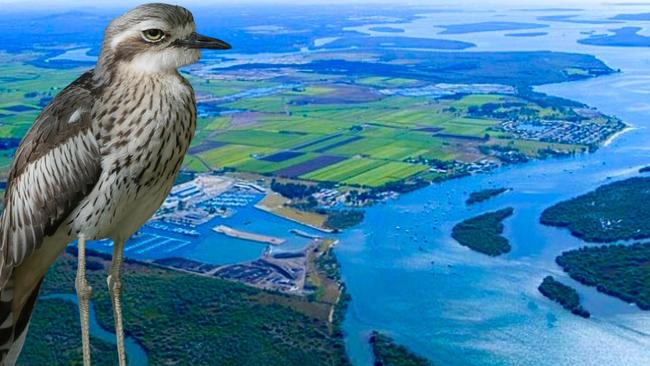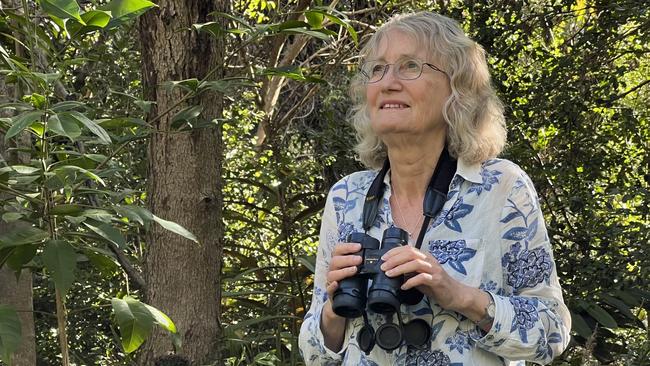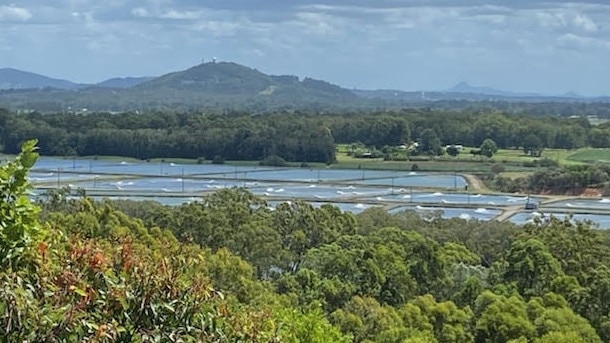Logan River prawn farms under fire for blasting cannons every 20 seconds
Logan River prawn farmers have been firing thousands of cannons, sometimes as often as one every 10 seconds, to save this year’s harvest from birds known to spread deadly diseases. WATCH THE VIDEO
Logan
Don't miss out on the headlines from Logan. Followed categories will be added to My News.
Prawn farms at the centre of an outbreak of a deadly crustacean disease have ducked for cover after claims they were blasting air cannons thousands of times a day to purge the area of birds during this month’s harvest.
Aquaculture farmers on the Logan River have been firing air cannons up to 10 times a minute, from dawn to dusk, in a bid to keep birds from swooping on their ponds and stealing the delicious seafood.
Prawn farms continue to operate on the river after the deadly white spot outbreak forced them to empty their ponds and flush them out with chlorine in December 2016.
But it is unknown which farms were employing the nonlethal cannon method more than 3000 times a day this month.

Redland Bay residents, whose properties are on the opposite side of the Logan River to the Woongoolba prawn farms, said the blasts started early morning and would go all day, often as much as once every 10 seconds.
Resident Debra Anderson said noise from the explosions was not as loud as in 2016-2017 when the state government was trying to contain the white spot outbreak.
“Back then the blasts were very loud and further upriver rather than now when they are downstream and closer to the bay, which is a protected habitat,” Ms Anderson said.
“It would be terrible to have another outbreak of white spot.”
Since the 2016 outbreak, Biosecurity Queensland has patrolled the farms and the river, which runs into the Moreton Bay Marine Park, which has dedicated conservation areas and protection zones near the mouth of the Logan River.
An outbreak of the disease was detected in the Clarence River, near Yamba last year.
Local bird groups said although cannon firing was a nonlethal way of dispersing birds, it was illegal in parts of the Moreton Bay Marine Park and parts of the southern bay, including on Ramsar wetlands.

Queensland Wader Study Group member Robert Bush said it was illegal to fire cannons in the marine park but also illegal to make sounds outside the park which disturb animals inside.
“Shorebirds and waders are protected under the federal government’s Environmental Protection Biodiversity and Conservation Act and it is an offence to disturb them inside a marine park,” Mr Bush said.
“The noise does not have to occur within the marine park and it is an offence to make noises outside the park which disturb shorebirds anywhere in the park.
“These rules are to protect birds such as the endangered eastern curlew which is a migratory bird that does frequent Redland Bay wetlands but is not usually on these shores at this time of year.”

BirdLife Redlands and Brisbane Bayside branch convener Kathy Clark said her group’s research had found using cannon blasting was an ineffective measure for dispersing birds in the long term.
“It is disruptive for birds in nearby areas who may be frightened away and that can possibly affect breeding patterns which can have a considerable impact on endangered species,” she said.
“It also affects other animals – and humans too and we suggest research into other forms of technology to disperse the birds.”
But the Department of Agriculture and Fisheries and the state’s Environment Department both said the cannon blasts were necessary because water birds posed a significant risk of spreading high-risk diseases such as white spot.
Both departments issued statements supporting the responsible use of nonlethal methods of bird control to manage disease risk at prawn farms on the river.
The Environment Department said it had had no complaints about recent reports of gas guns or cannons being fired every 10 seconds.
The department said firing the cannons was legal as long as the prawn farmer had a state-government issued damage mitigation permit which were issued for free if the farm demonstrated a significant economic loss from the birds.

“Under the Damage Mitigation Permit conditions, a permit holder must first employ nonlethal means of deterrent,” the department said.
“The use of gas guns is nonlethal and meets the DMP conditions, but are for sound only, and not for the use of projectiles.
“Under the damage mitigation permit process for this issue, there is no requirement for the permit holder to inform the department when gas guns are deployed.”
Prawn farms were contacted for comment.
There is no suggestion the farms in question acted illegally or beyond their permits.
Australian Prawn Farmers Association executive officer Kim Hooper acknowledged the cannon blasting and said it was only for a short period of time during the year.
“It should be finishing in the next week or two,” she said.
“Cannon noise is a nonlethal mitigation method to deter birds off farms as an effective biosecurity measure.
“Under their Biosecurity Obligation by the state government, farms must employ biosecurity measures to mitigate risk.
“In addition, farms also employ workers specifically to drive around the ponds to move birds away – also as a nonlethal mitigation method.”
Fines of up to $500 have been issued for fishing or breaches to rules inside the marine national park zone, which contains areas of high conservation value.
More Coverage
Originally published as Logan River prawn farms under fire for blasting cannons every 20 seconds





